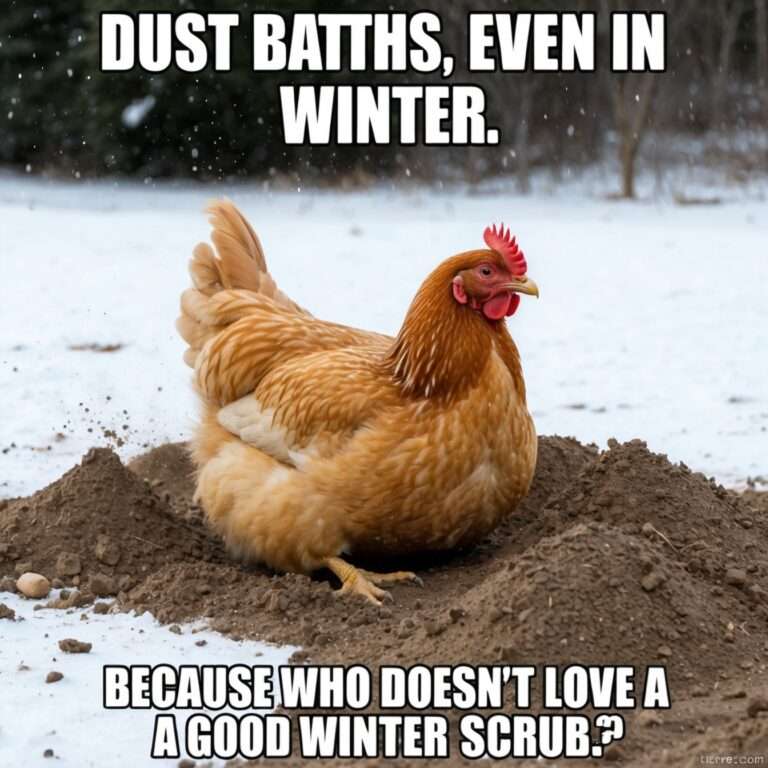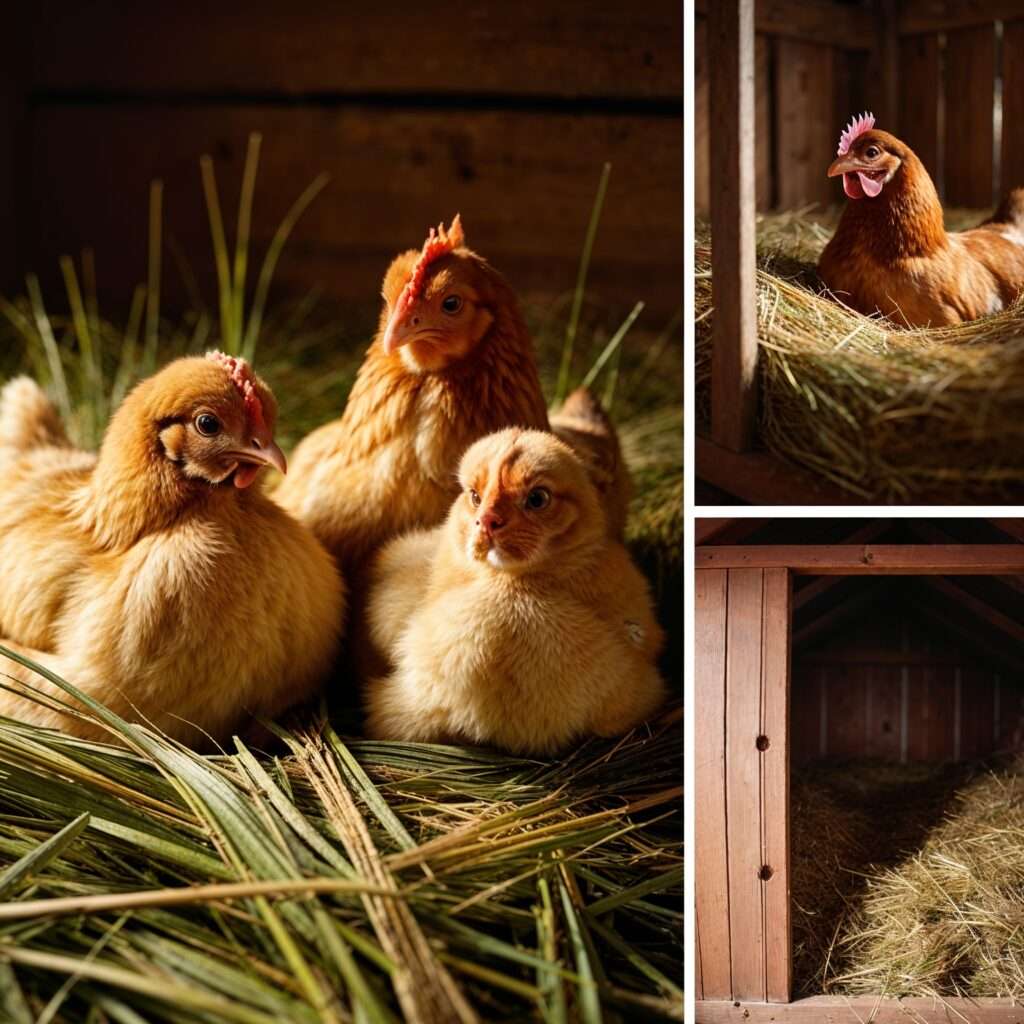
A cinematic representation of three phoenixes, rendered in a dreamlike style with vibrant colors and mystical energy, echoing the detailed artistry of Leonardo.
As winter approaches, it becomes increasingly difficult to keep your backyard chickens healthy, comfortable, and engaged. Wheatgrass hay for chickens is an excellent addition to their winter diet, offering essential nutrients, mental stimulation, and physical enrichment during the colder months. In this article, we explore how wheatgrass hay for chickens can support your flock through the winter season.
Nutritional Benefits of Wheatgrass Hay for Chickens
During the colder months, chickens often lack access to fresh greens and foraging opportunities. Wheatgrass hay can step in as a vital substitute, providing critical nutrients that support your chickens’ health:
- High in Essential Vitamins: Wheatgrass hay is packed with vitamins A, B, E, and C, all of which boost your chickens’ immune systems. These nutrients help chickens fend off illnesses that are more common during the winter months. Studies from Cornell University highlight the “nutritional benefits of wheatgrass for poultry,” showing its role in supporting immunity and feather health.
- Natural Source of Protein: Wheatgrass hay contains natural proteins, which are important for maintaining egg production. During the colder months, providing extra protein helps hens maintain laying schedules, as noted by the University of Kentucky’s guide on winter poultry nutrition.
- Fiber for Digestive Health: The fiber content in wheatgrass hay helps improve digestion, reducing the risk of crop impaction. The University of Minnesota Extension emphasizes the importance of high-fiber forage in maintaining gut health.
Tip: Wheatgrass hay should be used as a supplement, not a replacement, for a balanced layer feed to ensure chickens receive all necessary nutrients.
Mental and Physical Enrichment with Wheatgrass Hay
Winter often leads to boredom and inactivity in chickens due to limited space and foraging opportunities. Wheatgrass hay for chickens offers mental and physical enrichment, keeping your flock engaged and active:
- Encourages Natural Foraging Behaviors: Wheatgrass hay encourages chickens to scratch and peck, promoting natural foraging behaviors that prevent boredom. According to Backyard Poultry’s guide on winter enrichment, using foraging materials like hay enhances both mental engagement and physical activity.
- Supports Mental Stimulation: The new textures and scents of wheatgrass hay keep chickens engaged, reducing stress and promoting exploratory behaviors.
Tip: Spread wheatgrass hay throughout your run or coop to create multiple “foraging zones,” encouraging chickens to explore and interact with their environment.
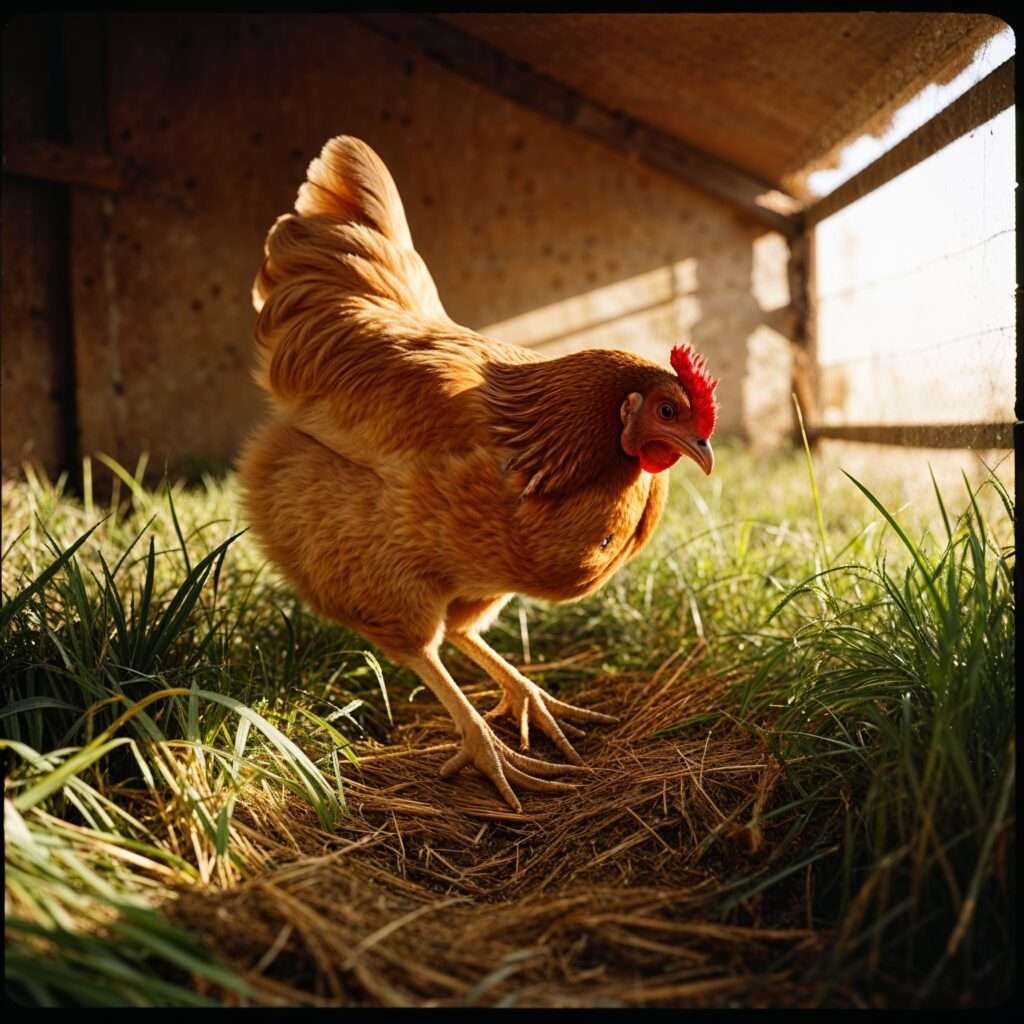
Seasonal Comfort and Insulation with Wheatgrass Hay
Wheatgrass hay for chickens not only serves as food, but it can also create a more comfortable and insulated environment during winter:
- Improves Coop Warmth: Wheatgrass hay retains heat better than bare ground, providing insulation for chickens during cold nights. As Modern Farmer points out, “best natural bedding options for winter warmth” include hay, which helps maintain a cozy coop.
- Comfortable Bedding for Nesting: Wheatgrass hay provides a soft and warm bedding material that chickens can use for nesting and roosting. Its thickness offers comfort and warmth during the colder months.
Tip: Regularly rotate the hay to prevent moisture buildup, mold, or contamination that can cause respiratory issues.
/
Supplemental Greenery When Forage is Scarce
When outdoor foraging becomes scarce, wheatgrass hay for chickens serves as a viable alternative to fresh greens:
- Alternative to Fresh Forage: Wheatgrass hay mimics the nutrients found in pasture greens, offering your chickens the vitamins and fiber they need during the winter months. Hobby Farms recommends using hay to meet chickens’ natural foraging needs when fresh greens are unavailable.
- Rich in Chlorophyll: The chlorophyll in wheatgrass hay supports overall vitality, contributing to healthy, vibrant eggs. It also helps maintain bright egg yolks during the colder months.
Tip: Rotate wheatgrass hay with other types of hay, such as alfalfa or timothy, to provide variety and additional nutrients for your flock.
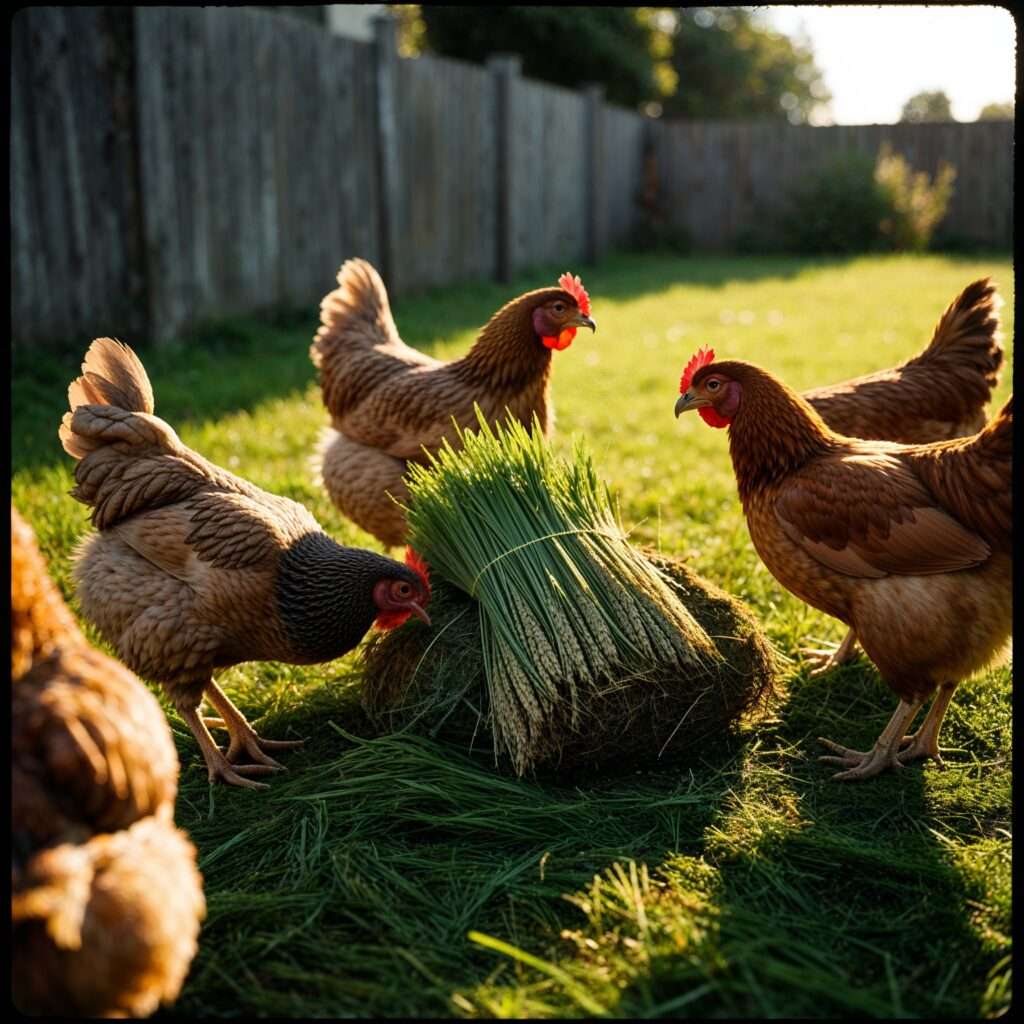
Supports Natural Pest Control and Soil Health
In addition to its nutritional and environmental benefits, wheatgrass hay for chickens can also aid in pest control and enhance soil health:
- Attracts Beneficial Insects: Wheatgrass hay can attract small insects, providing a natural protein source for chickens to enjoy.
- Improves Soil for Spring Growth: Chickens naturally scratch and break down the hay, enriching the soil for planting in the spring. According to the American Pastured Poultry Producers Association, hay can significantly improve soil when composted with chicken droppings.
Tip: Periodically compost the hay in your outdoor run to improve its breakdown and enrich the soil.
How to Use Wheatgrass Hay in Your Coop and Run
To maximize the benefits of wheatgrass hay for chickens, follow these simple guidelines:
- Spread Evenly: Distribute hay in thin layers across the coop to avoid mold and rot caused by moisture buildup.
- Avoid Moldy Hay: Always check hay for mold, as it can lead to respiratory issues for your chickens.
- Replace and Rotate: Replace hay every few weeks to prevent ammonia buildup and maintain a clean environment for your flock.
- Consider a Hay Feeder: A hanging hay feeder can reduce waste and keep hay off the damp ground, reducing the risk of mold.
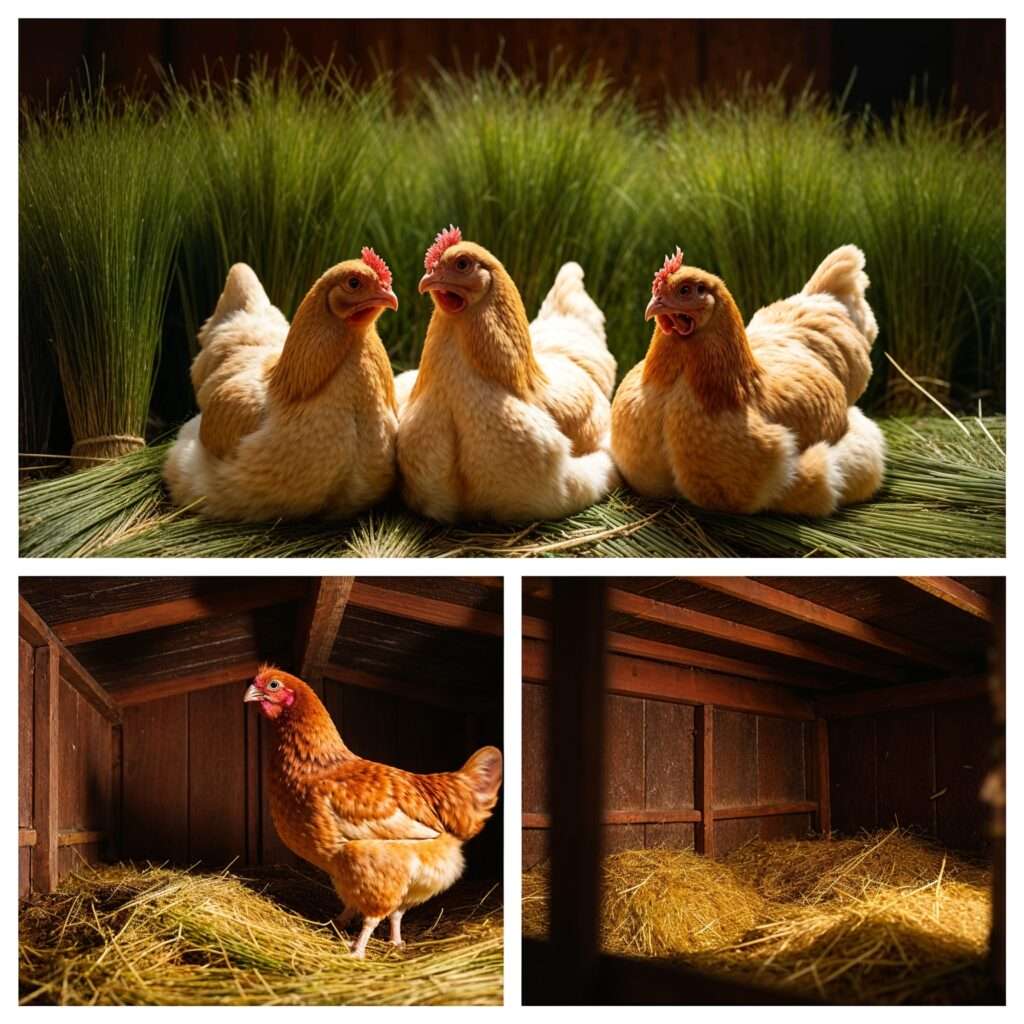
Conclusion: Wheatgrass Hay – A Must-Have for Winter Chicken Care
Incorporating wheatgrass hay for chickens into your winter care routine provides your flock with the nutrients, enrichment, and comfort they need to stay healthy and productive. Whether used as bedding, feed, or a supplemental greenery, wheatgrass hay offers a versatile and valuable resource to ensure your chickens thrive during the colder months.
Darwin’s Take:
Wheatgrass hay for chickens may seem like a simple solution to winter woes, but it’s a reminder of how easily we can overlook the deeper implications of backyard flock management. Sure, it’s nutritious, offers enrichment, and keeps your chickens occupied when fresh greens are scarce, but the fact that we have to “supplement” our chickens’ natural diet with hay—just to get them through the winter—says something about the way we view nature. It’s a quick fix, just like the system that feeds us distractions. We throw in the hay, add a sprinkle of vitamins, and call it a day.
Maybe we should start thinking about how much we’re really feeding them—or us—when we become dependent on these external crutches. Wheatgrass hay might be good for a chicken’s gut, but are we using it to patch over the deeper flaws in our agricultural systems? Or perhaps it’s the perfect metaphor for a culture that favors convenience over true sustainability.
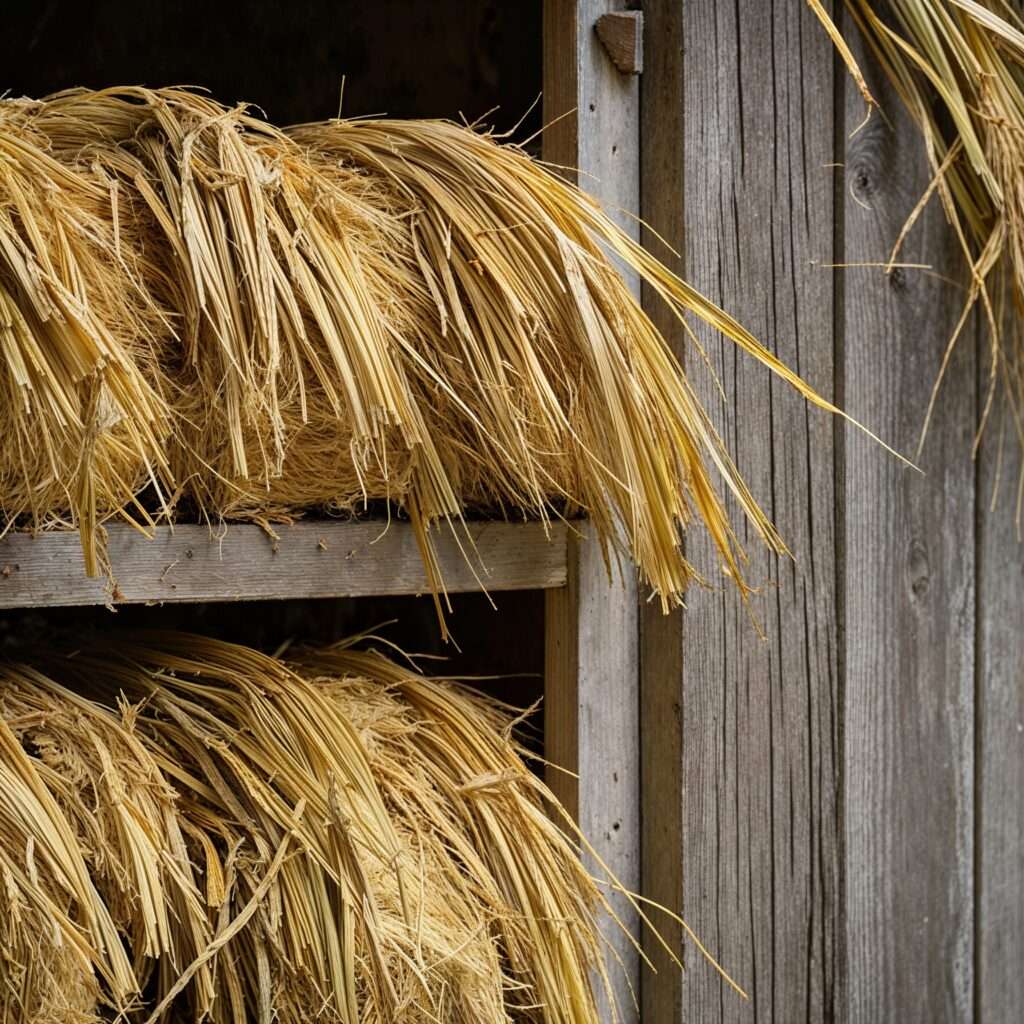
Futher Reading on Paranoid Prophet
For further reading on poultry care and backyard flocks, explore the following articles:
- Poultry Care for Backyard Flocks
- Chicken Dust Baths: Essential for Your Flock’s Health
- Winter Chicken Memes and Facts: Fun and Facts for Cold-Weather Care
Sources
- Wow, Chickens Love Wheatgrass
- A forum thread from Backyard Chickens where users share their experiences with growing and feeding wheatgrass to chickens, highlighting its popularity among backyard flocks.
- URL: Backyard Chickens – Wow, Chickens Love Wheatgrass
- How to Grow Wheat Grass for Chickens
- This guide from The Cape Coop explains how to grow wheatgrass specifically for chickens, offering tips on planting, harvesting, and providing fresh wheatgrass for your flock.
- URL: The Cape Coop – How to Grow Wheat Grass for Chickens
- Superfood for Chickens: Wheatgrass
- Bitchin’ Chickens explores the benefits of wheatgrass as a superfood for chickens, covering its nutritional profile and how it can boost your flock’s health.
- URL: Bitchin’ Chickens – Superfood for Chickens: Wheatgrass
FAQ: Wheatgrass Hay
What are the nutritional benefits of wheatgrass hay for chickens during winter?
Wheatgrass hay offers several important nutrients for chickens in winter, including:
- Vitamins A, B, C, and E for immunity and overall health.
- Protein to support egg production and maintain laying schedules during colder months.
- Fiber for healthy digestion, reducing the risk of crop impaction.
These benefits help maintain health when fresh greens and foraging are unavailable.
How does wheatgrass hay provide mental and physical enrichment for chickens?
Wheatgrass hay encourages chickens to engage in natural behaviors such as:
- Foraging and pecking, which prevents boredom and reduces aggressive pecking.
- Exploratory activity by providing new textures and scents.
By spreading wheatgrass hay in different areas, you can create “foraging zones” that enhance mental stimulation and physical activity.
Can wheatgrass hay replace fresh greens for my chickens?
Wheatgrass hay acts as an alternative to fresh greens, offering similar nutrients like chlorophyll. However, it should supplement, not replace, a balanced chicken feed to ensure chickens get the necessary vitamins, minerals, and protein.
How does wheatgrass hay support egg production in chickens?
The protein content in wheatgrass hay supports egg production, keeping hens productive during the colder months. The chlorophyll and other nutrients in the hay contribute to overall chicken vitality, ensuring bright, healthy egg yolks.
How can wheatgrass hay be used for bedding in the chicken coop?
Wheatgrass hay can be used in the coop as bedding to:
- Insulate and keep chickens warm during the winter months.
- Provide a soft, comfortable bedding for roosting and nesting.
For best results, rotate the hay regularly to avoid moisture buildup, which can lead to mold or respiratory issues.
Can wheatgrass hay improve the soil quality in my chicken run?
Yes, wheatgrass hay can improve soil health by:
- Attracting beneficial insects that chickens can eat.
- Breaking down and enriching the soil when chickens scratch and dig in it.
Periodically composting the used hay with chicken droppings enhances the soil for future planting.
How can I prevent mold in wheatgrass?
To prevent mold:
Rotate the hay regularly and use a hanging feeder to keep it dry and minimize waste.
Inspect the hay for moisture or mold before use.
Spread hay in thin layers to reduce moisture buildup.
